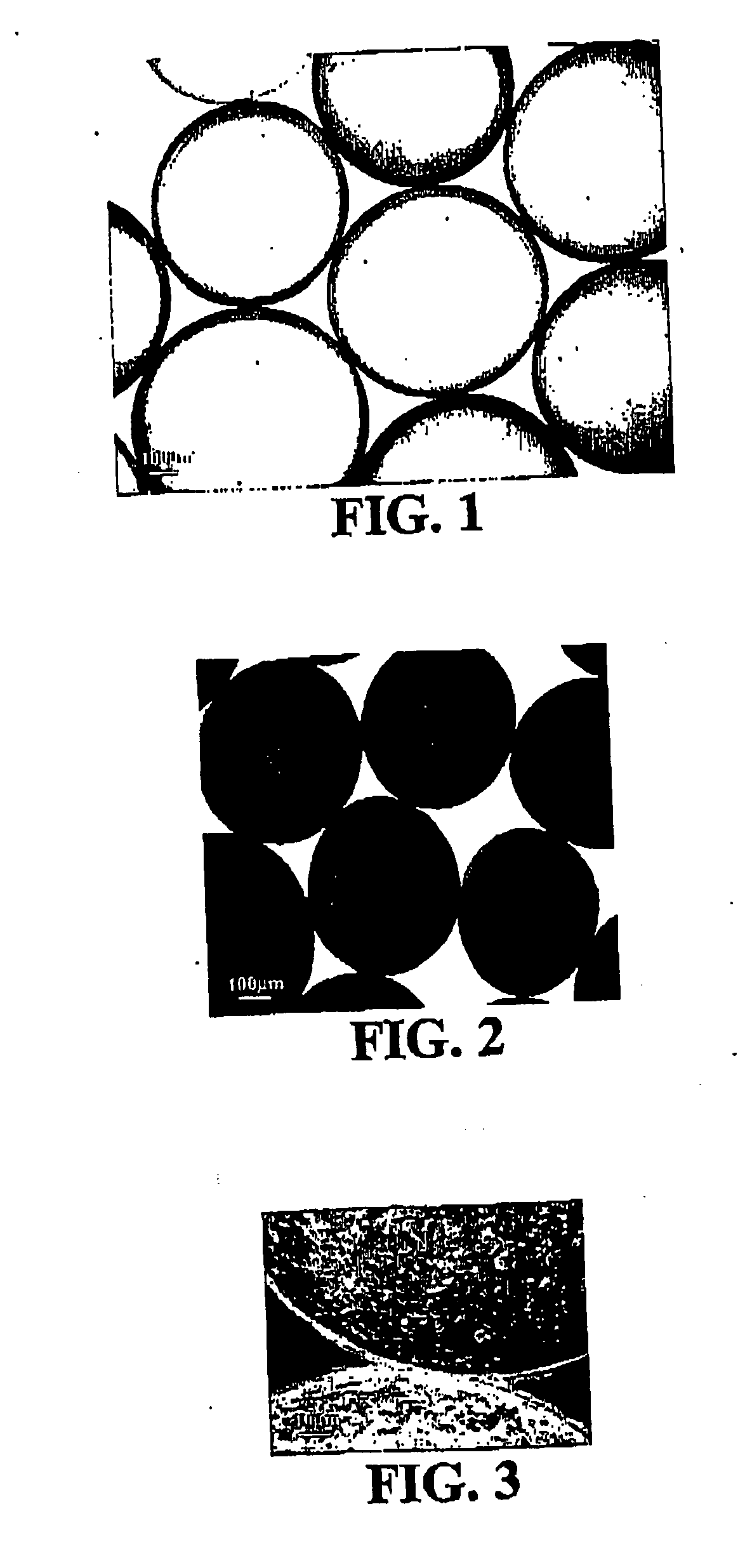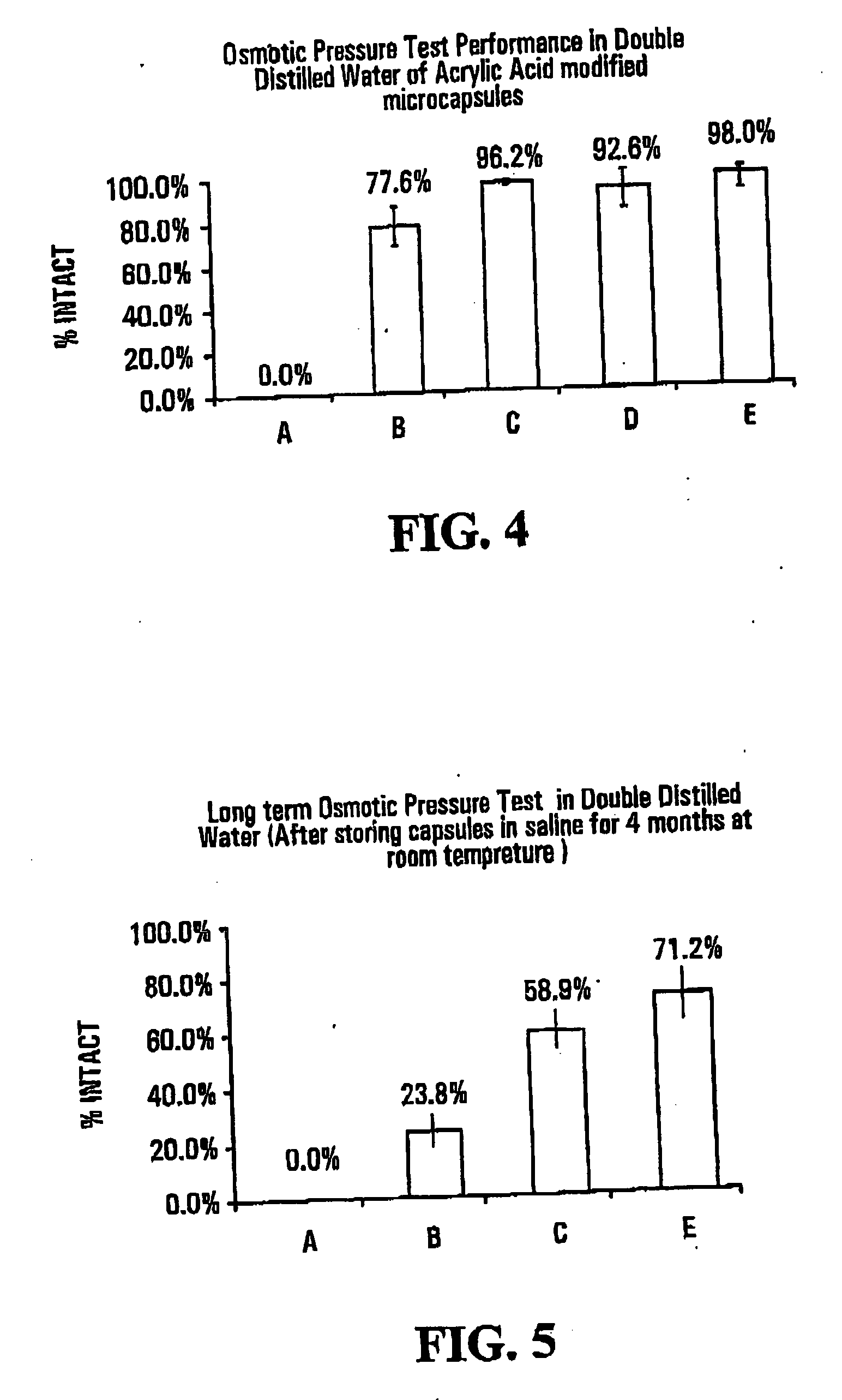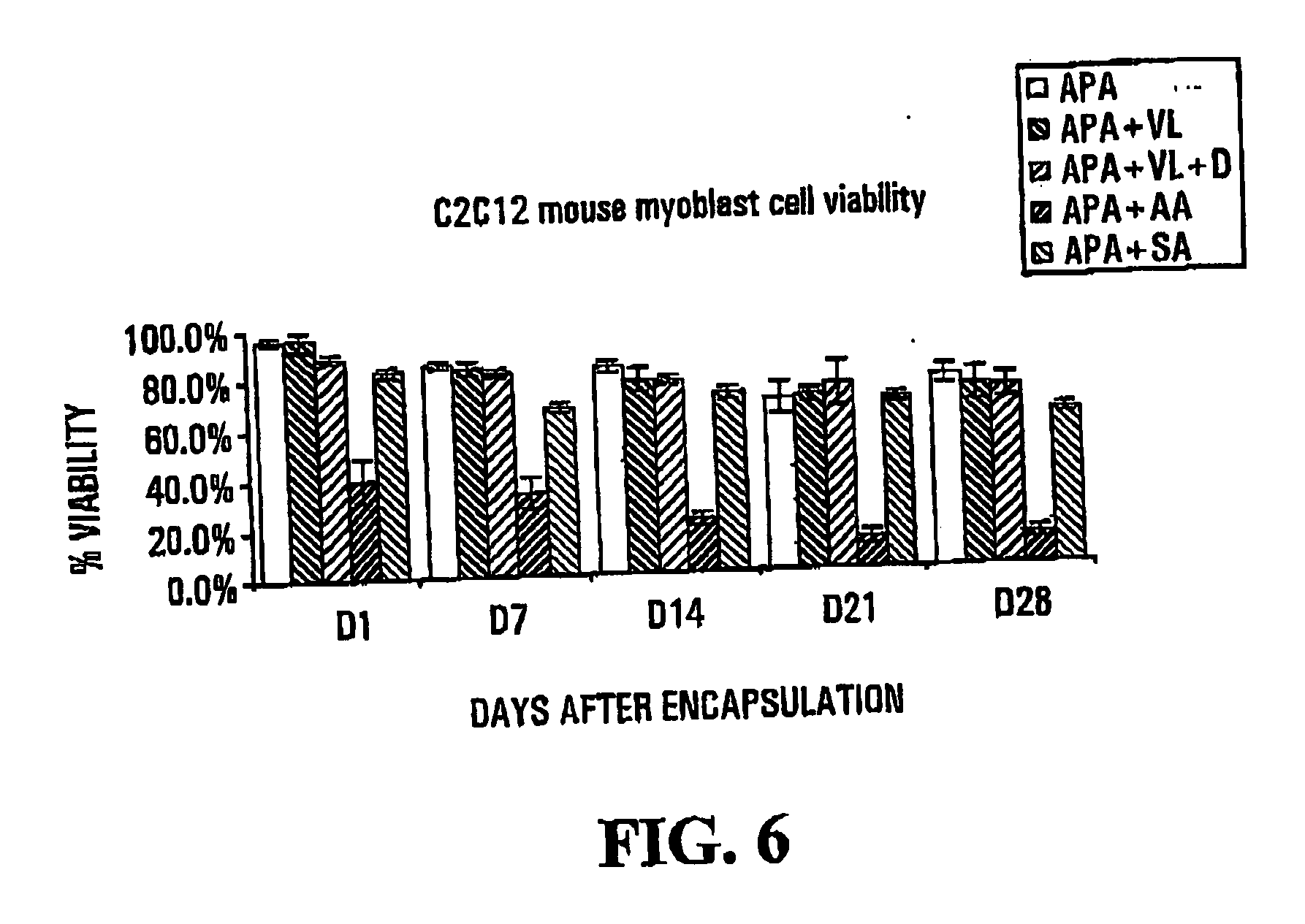Microcapsules containing biomedical materials
a biomedical material and microcapsule technology, applied in the field of microcapsules, can solve the problems of insufficient stability of capsules, deformation, and limitation of the application of this approach to treatment, and achieve the effect of low cos
- Summary
- Abstract
- Description
- Claims
- Application Information
AI Technical Summary
Benefits of technology
Problems solved by technology
Method used
Image
Examples
example 1
Detailed Procedure with Acrylic Acid using Irgacure as the Photoinitiator with Long Wavelength UV Light
[0068] A solution containing 100 μl of 0.2% Irgacure 2959 in saline, 30 μl of 1.39 M Acrylic Acid in saline and 50 μl of 0.834M N-vinylpyrrolidone in saline were added to 2 ml of calcium microcapsule in a 60 mm cell culture dish. After a gentle shaking, the microcapsules were immediately enclosed to UV light (wavelength of approximately 350 nm) for varying periods at 4° C. Afterwards, the capsules were washed with fresh 1.1% CaCl2 to remove unreacted reagents. The capsules were then treated with poly-L-lysine and alginate in the standard manner. Sterile techniques were used throughout the whole procedure.
[0069]FIG. 4 shows results of osmotic pressure tests in double distilled water on capsules of the invention and “standard” capsules, i.e., capsules that had not been subjected to photopolymerization with an ethylenically unsaturated monomer. The osmotic pressure test measures th...
example 2
Detailed Procedure with Acrylic Acid using Ethyl Eosin as the Photoinitiator
[0078] The capsules as obtained in Example 1 were suspended in 10 ml of an ethyl eosin solution (see above for formulation) for 2 min to allow uptake of the dye, then washed three times with fresh 1.1% CaCl2 to remove non-absorbed dye. The microcapsules were transferred from the CaCl3 solution to a 0.9% NaCl solution for photomoaification.
[0079] A solution was prepared by admixing 100 μl of 4% w / v of triethanolamine in physiological saline, 30 μL of 1.39M acrylic acid in physiological saline and 25 μl of 0.832M N-vinylpyrrolidone in physiological saline. The solution was added to 2 ml of these microcapsules contained in a 60 mm cell culture dish. After a gentle shaking, the microcapsules were immediately exposed to visible light (wavelength greater than 400 nm) for a defined period at 4° C. After the irradiation, the capsules were washed with fresh 1.1% CaCl2 solution to remove unreacted reagents. The cap...
example 3
Detailed Procedure with Sodium Acrylate using Ethyl Eosin as the Photoinitiator with Visible Wavelength Light
[0088] A procedure similar to Example 2 was used, with acrylic acid are the ethylenically unsaturated monomer and with ethyl eosin as an initiator. The same molar amount of sodium acrylate (30 μl of a 1.39M solution) and varying concentrations of N-vinylpyrrolidone were added to 2 ml of the suspended capsules. (The amount of sodium acrylate used corresponds to a 10% modification.)
[0089]FIGS. 7 and 8 show results of osmotic pressure tests conducted on capsules formed with varying amounts of sodium acrylate. The tests were carried out upon formation of the capsules, and after storage in saline for Tofthu at room temperature, respectively. Details are as follows: [0090] A—Standard alginate-poly-L-Lysine-alginate microcapsules [0091] B—10% w / w sodium acrylate (SA) (30 μl 1.35M) to Alginate [0092] C—20% w / w sodium acrylate (SA) 60 μl 1.39M to Alginate [0093] D—50% w / w sodium ac...
PUM
| Property | Measurement | Unit |
|---|---|---|
| Wavelength | aaaaa | aaaaa |
| Strength | aaaaa | aaaaa |
| Molar ratio | aaaaa | aaaaa |
Abstract
Description
Claims
Application Information
 Login to View More
Login to View More - R&D
- Intellectual Property
- Life Sciences
- Materials
- Tech Scout
- Unparalleled Data Quality
- Higher Quality Content
- 60% Fewer Hallucinations
Browse by: Latest US Patents, China's latest patents, Technical Efficacy Thesaurus, Application Domain, Technology Topic, Popular Technical Reports.
© 2025 PatSnap. All rights reserved.Legal|Privacy policy|Modern Slavery Act Transparency Statement|Sitemap|About US| Contact US: help@patsnap.com



